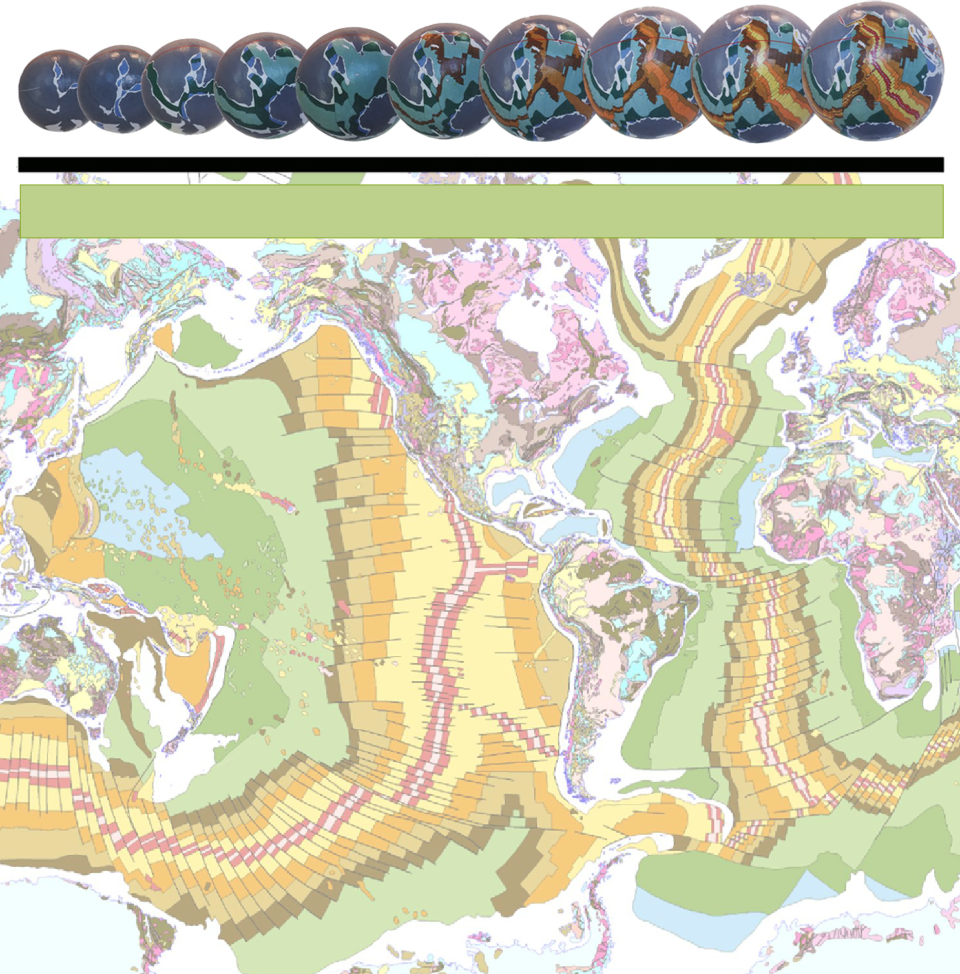

HOW DOES EXPANSION TECTONICS DIFFER FROM PLATE TECTONICS?
Plate tectonic theory insists that the radius, and hence mass of the Earth remains constant over time. This insistence was formulated well before the advent of modern space-
In plate tectonic theory, as each of the modern oceans open, new volcanic lava extrudes along mid-
Alternatively, for an Expansion Tectonic Earth the radius and mass are not constant over time in accordance with modern space-
For an Expansion Tectonic Earth this increase in surface area of all the oceans occurs as a direct result of an increase in Earth radius. Surface area of each ocean is then shown to be cumulative with time. Because of the increase in Earth radius and surface area there is no requirement for any net disposal of excess crust by subduction processes, nor is there a need to consider the existence of pre-
On an Expansion Tectonic Earth it is the mechanisms governing change in surface curvature during increase in radius that gives rise to all geological phenomena observed on Earth today. These phenomena include commonly observed features, ranging from formation of simple joints and folding in rocks, through to more complex tectonism seen in mountain formation. All observed geological phenomena, in turn, are also linked to evolving changes in sea levels and coastal outlines, through to erosion of the landscapes and the evolution and demise of species.
Plate tectonics fits scientific data about the Earth to plate theory, whereas Expansion Tectonics allows the data to define and quantify its own theory.